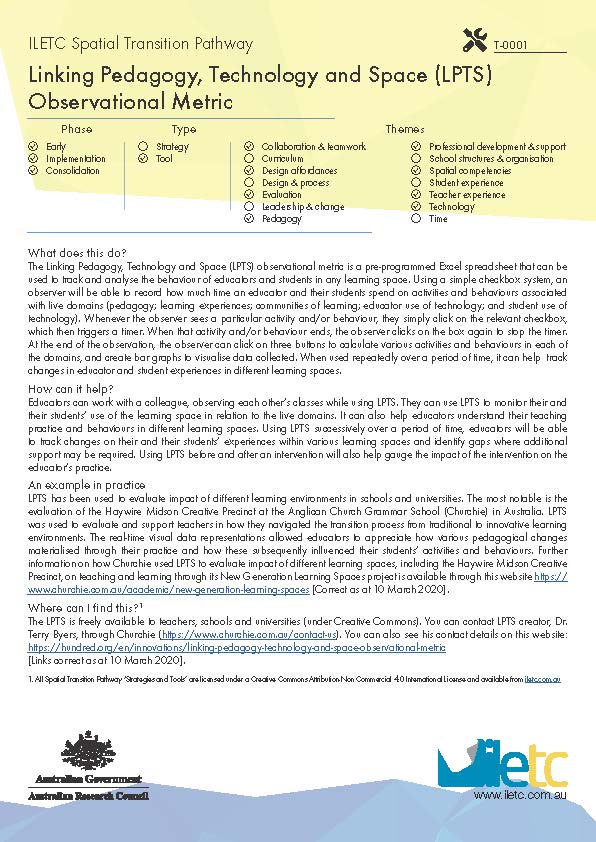| Introduction | Wayfinding activity | Spatial typologies | Spatial transition case studies | Spatial transition resources |
Spatial Transition Pathway
The Spatial Transition Pathway provides a framework for the strategies and tools which support teachers to make the journey of change into innovative learning environments. Strategy is defined as an explicit concept, theory or practice that enhances teachers’ use of innovative learning environments. A tool is an identifiable activity or protocol, that implements a strategy. You can use the database to search for strategies and tools by temporal phase or transition theme(s). If you would like to contribute a strategy or tool, please contact the ILETC team.
Linking Pedagogy, Technology and Space (LPTS) Observational Metric
The Linking Pedagogy, Technology and Space (LPTS) observational metric is a pre-programmed Excel spreadsheet that can be used to track and analyse the behaviour of educators and students in any learning space. Using a simple checkbox system, an observer will be able to record how much time an educator and their students spend on activities and behaviours associated with five domains (pedagogy; learning experiences; communities of learning; educator use of technology; and student use of technology). Whenever the observer sees a particular activity and/or behaviour, they simply click on the relevant checkbox, which then triggers a timer. When that activity and/or behaviour ends, the observer clicks on the box again to stop the timer. At the end of the observation, the observer can click on three buttons to calculate various activities and behaviours in each of the domains, and create bar graphs to visualise data collected. When used repeatedly over a period of time, it can help track changes in educator and student experiences in different learning spaces.

